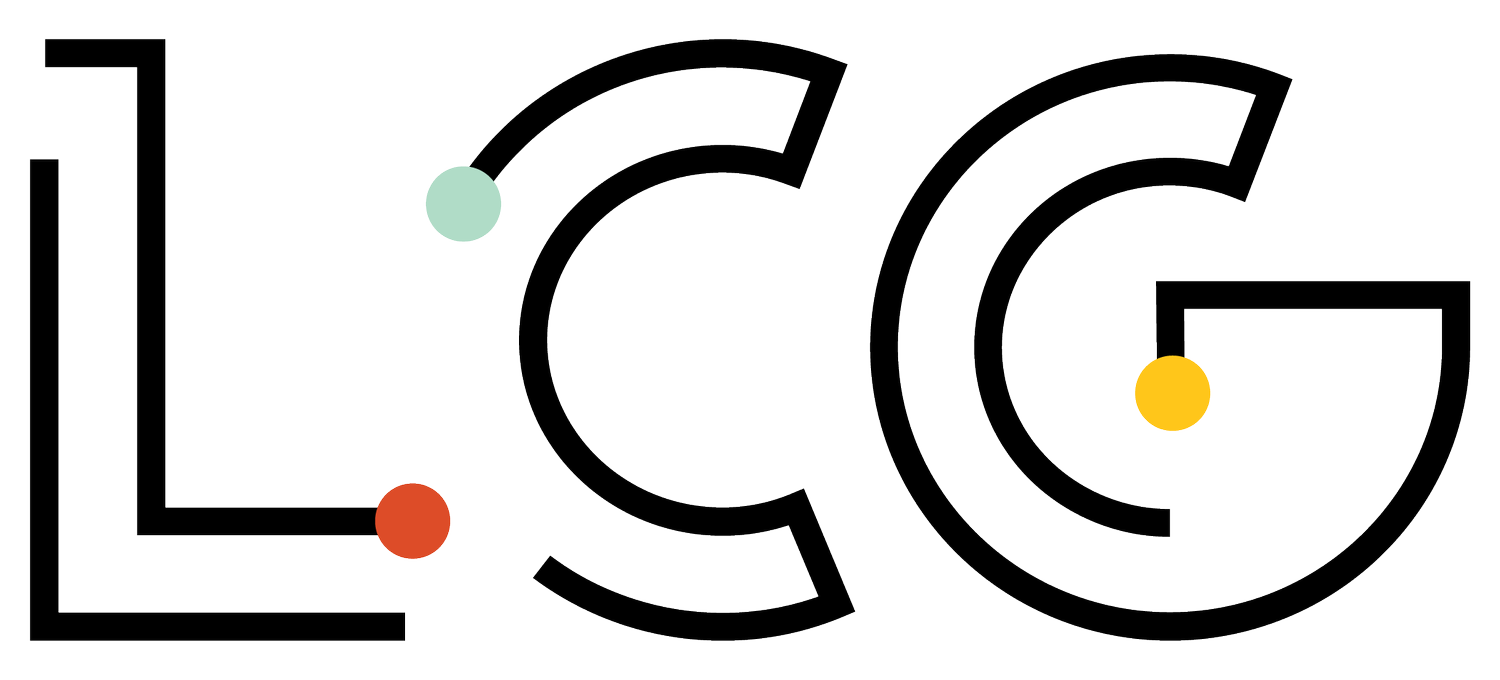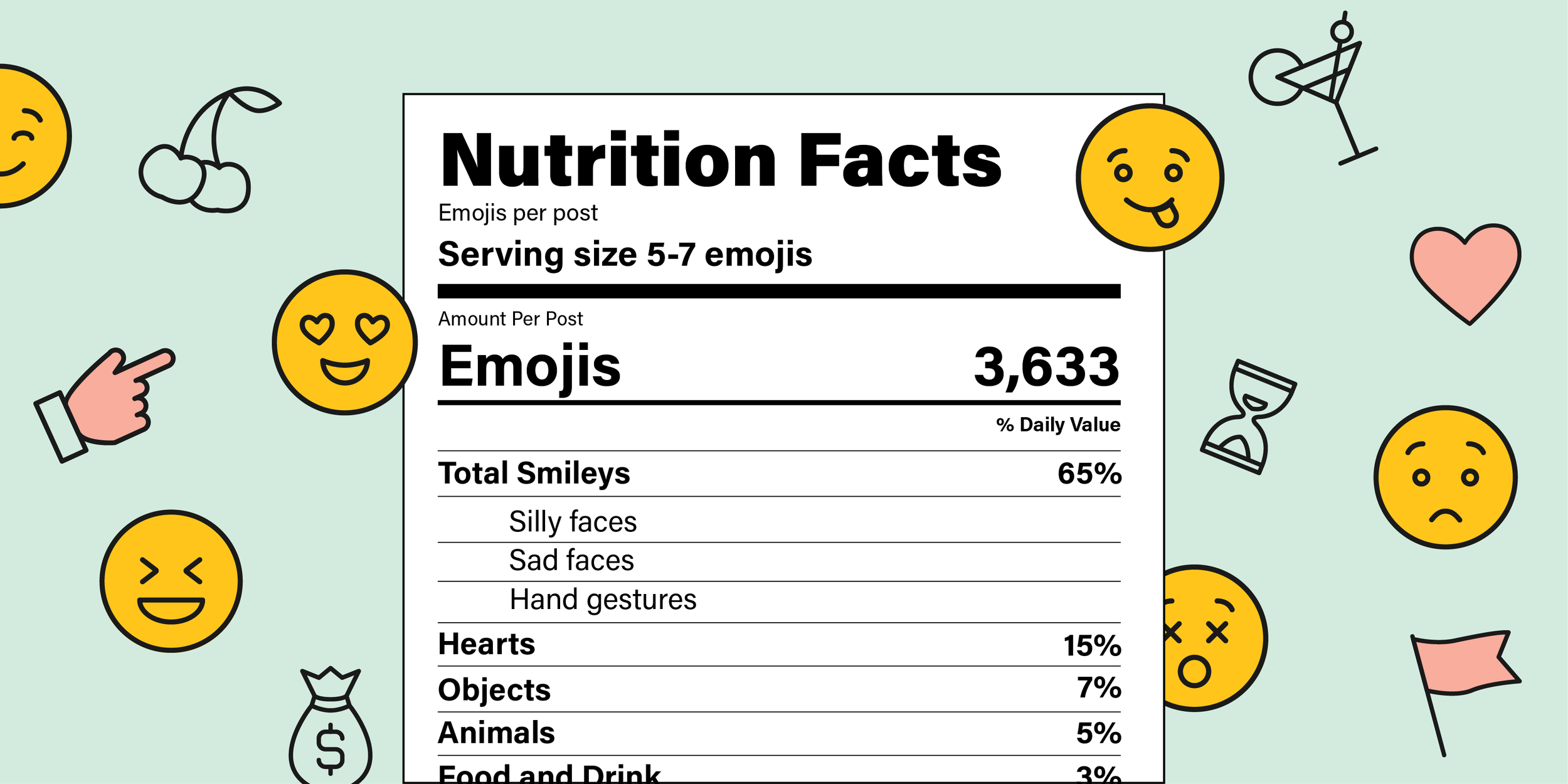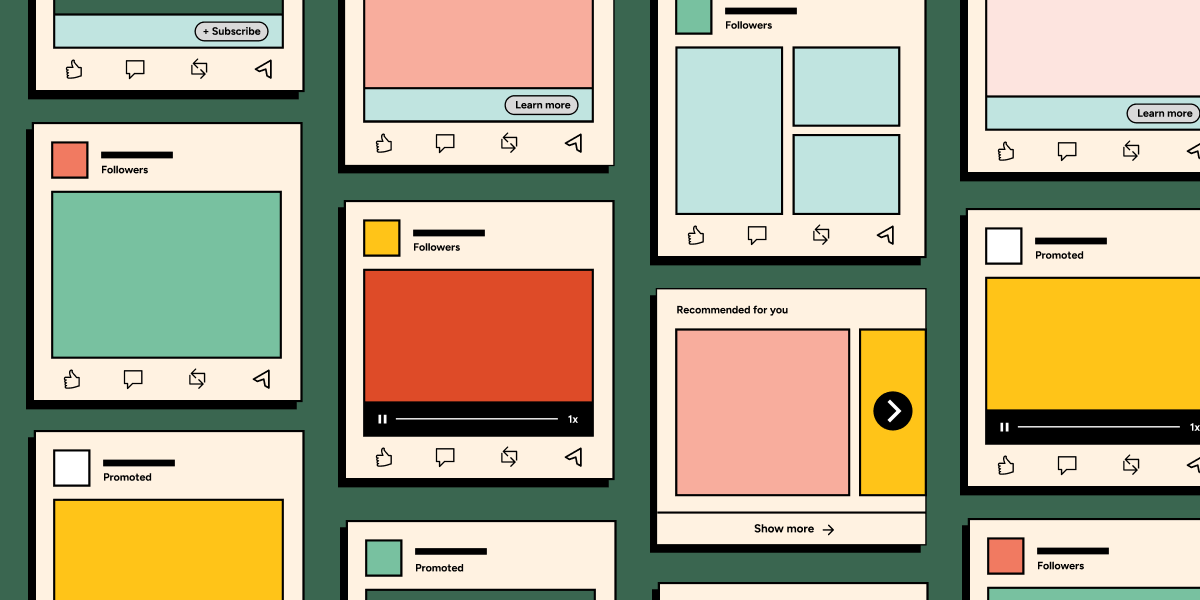Should you include emojis in your social media posts? Emoji use has never been higher. 💕🆙 In fact, more than one in five tweets include an emoji. This usage has grown 40% in five years! 95% of Internet users have now used an emoji. That big fact is worth a pause. 95%! Over 10 billion emojis are also sent daily. To top it off, Emojis became so popular that the “face with tears of joy” emoji (😂) was declared the word of the year in 2015 by Oxford Dictionary.
Beyond widespread use, emojis have also been proven to increase engagement. It's been found that using emojis in tweets can increase engagement by over 25%. In addition, Facebook posts with emojis can get 57% more likes and 33% more comments than posts without emojis. 📈
Before you get excited and start using emojis everywhere, it’s important that you use them in the most accessible and on-brand way. We’ve gathered some of the best tips to help guide your emoji usage in your social media programming.
What is an Emoji?
Defining what emojis are is an important foundational step. Ever since the invention of email in the 1970s, people have been looking for ways to shorten their messages; that has only accelerated since our transition to mobile devices. Emojis emerged as a way for us to communicate our emotions concisely over the internet, and have been evolving ever since.
Emojis are everywhere. From texting to marketing to even home decor, you can’t seem to go a day without seeing them. Despite the widespread availability and use, they are relatively new and only became available for everyone to use ten years ago. The word “Emoji” is derived from three Japanese words: “e” for picture, “mo” for write, “ji” for character. Today, they are images that are used to visually depict people, food, activities, objects, and even flags. Depending on the type of emoji, you can even customize them by skin tone, hair colors, and textures.
Emoji have come a long way since their original invention in 1999. A Japanese artist named Shigetaka Kurita was looking for a more attractive interface to concisely share information. He illustrated 176 original emojis, which are now part of New York Museum of Modern Art’s permanent collection.
In 2007, a team at Google presented 635 emojis to a nonprofit group that works to maintain text standards across computers called the Unicode Consortium. In 2011, the Consortium adopted emojis into their standard, legitimizing emojis as a communication method and making them accessible to all computer users.
Since then, emojis have become a very important part of interacting online. There are now 3,633 emojis available for usage. New emojis are also added every year and anyone can create an emoji, and even though the approval process can be lengthy and you have to follow specific guidelines. 112 emojis were added in the latest emoji update (September 2021).
Without further delay, here are our top tips to ensure you use emojis in the best possible way in your social media posts.
Emoji Do’s and Don’ts
✘ Don’t: Use an emoji without understanding its meaning to everyone.
Don’t include an emoji without understanding its meaning, or you may unintentionally send the wrong message. Emojis are used completely differently and that can be determined by the generation of the person using the emoji. For example, the slightly smiling face 🙂, which you might assume is “happy,” is most often used passive-aggressively to convey sarcasm or irony for the Gen Z generation. Gen-Z also uses the loudly crying face 😭 to express dramatic feelings such as excitement, anger, frustration, laughter etc. They use it when someone says something hilarious or really, really cute. Most statements will fit this emoji, as it’s generally used to exaggerate and highlight your words. Just remember – it's all in the context. On the other spectrum of older millennials, this emoji might just come off as crying and could actually make them worried.
Part of this is also understanding your audience, and knowing which emojis they use and how specifically they like to use them. Education brands generally speak to teachers, who, on average, are coming from the Gen X and Millennial generations.
For best practice, and for giving yourself all the context you need, this is a good list of emoji definitions. If you’re ever unsure what an emoji means, always double check.
✔ Do: Identify key emojis to match your brand.
Keep your brand voice consistent and professional by identifying a few key emojis that not only match your brand’s personality, but also resonate with your audience. For example, if you’re an EdTech brand that cares about music and has a more fun, playful tone, you may want to use music 🎶🎵, podcasting 🎙 emojis, along with some playful emojis like these. 🤩 😎
✘ Don’t: Use multiple emojis in a row
Using multiple emojis in a row can not only be hard to read, but more importantly, it’s not accessible. Screen readers will read your brand’s message, and their emojis, out loud to those who cannot see them. So if you include an emoji in your message, someone will hear it as “smiling face with sunglasses.” 😎 Hearing one emoji description after another is time-consuming and makes the message inaccessible. For example, the red emoji flag trend was a nightmare for anyone using a screen reader.
✔ Do: Put any important information BEFORE any emojis.
For accessibility reasons, you should put any important information before any emojis. This way, those who are using screen readers will hear your message before it gets interrupted by the description of an emoji.
The Innovating Together Podcast is for busy people in higher education who are looking for the “aha moments” that can propel their work forward. 🎓
— University Innovation Alliance (UIA) (@UIAinnovation) November 17, 2021
Be inspired by our most popular episodes.#AcademicTwitter #Podcastinghttps://t.co/wOdg3ERd0x
✘ Don’t: Use emojis when talking about serious topics.
There is a time and a place for using emojis -- especially in the world of education. You never want to use emojis to oversimplify incredibly complex and/or triggering topics. Again, this all boils down to knowing your audience. Right now there is a teacher shortage and teachers are burning out left and right due to the pandemic. The last thing they need is a brand making light of their situation. Using emojis when the time isn’t right can feel disconnected, or even worse, disrespectful. However, you can do something like this (who doesn’t want to quickly drop a funny emoji or gif about the weekend?!).
✔ Do: Show off your brand’s personality
You can use emojis to inject a sense of humor into your social media copy. You can participate in trends relevant to your brand or anyone who works there. It’s a great opportunity to remind your audience of the human side of the brand.
🚩 "I don't subscribe to the UIA's newsletter." 🚩https://t.co/WKe4AjYDnL
— University Innovation Alliance (UIA) (@UIAinnovation) October 14, 2021
✘ Don’t: Force it.
Not every post on social media requires an emoji. Always ask yourself, “What benefit is this emoji bringing? Is this social post easy to read, see, and digest?” Never include emojis if you feel like you just have to; keep emojis purposeful and relevant to the conversation to boost the interaction. If you’re thinking too hard about it, it probably isn’t the right time for an emoji. Remember, the Internet can sniff out inauthenticity and nothing smells like a brand being inauthentic by inserting in a ton of emojis in every single social post. Like everything else, emojis should be used authentically.
✔ Do: Use emojis to emphasize your point.
Sometimes, text just needs a little bit of ✨spice✨. And emojis can be the perfect way to do that. For example, we often use a sprout 🌱 when we talk about growing your social media audience or building your online community.
✘ Don’t: Use emojis just because everyone else is.
Be cautious about jumping on emoji trends just because they are popular. When thinking about participating in a trend, think about your brand first. Is this a trend that applies to you, or that your brand would want to be associated with? Does your audience even use emojis?
✔ Do: Take advantage of emojis for real-time engagement.
Sometimes when you’re talking to people on social media, the words just escape you. Emojis are a great way to agree with someone 💯 or show your support 🎉 without needing to fully describe why (and it takes less time!).
✔ Do: Use emojis to visually appeal to your audience.
Emojis can help you catch the eye of your audience in a busy social media feed. In fact, emojis are a great way to emphasize lists or specific points you want to get across in a nice, visually pleasing way.
✘ Don’t: Use emojis that cross the line and could be viewed as threatening or violent.
There are over three thousand emojis to choose from. Within that set, there are bound to be emojis that really cross the line in terms of humor or even violence. For example, especially with education brand, we never use these emojis: 🤬💩💣🧨🔪🚬💊💉
✔ Do: Represent the diversity in your team and audience.
Emojis come in a wide range of skin tones. There are different schools of thought with this topic but regardless of your views, you need to have a discussion with your team about it, document your brand’s best practice and be consistent on using emojis in that fashion. Some people think you should only use the colors of emojis that you or you team represent. Some say to use the yellow since it's the most neutral. It's up to you and your brand to decide your policy on this, but the key is to be consistent and monitor any feedback from your audience.
Emojis are popular for a reason. They’re eye-catching, they add emotion to your message, and they’re fun! Using emojis in your social media marketing strategy can increase your engagement and help convey your brand’s unique voice. But in order to get the most out of using your emojis, you need to also understand the context surrounding them, making sure to not send the wrong message or rub someone the wrong way. To get the most out of emojis, pay attention to how other people use them and what the reactions might be. Don’t forget, meanings are always changing, so if you’re ever unsure, check out Emojipedia or Emojiguide for context and inspiration.
Other resources:
Emojipedia (an emoji dictionary that also shares the latest developments in the emoji world)
Emojiguide (an emoji search engine that provides stats on what emojis are popular in what subject areas)
8 Emoji Do’s and Don’ts (SocialMediaToday)
The Most Popular Emojis (Brandwatch)
How These 7 Brands Nailed Emoji Marketing Campaigns and What to Learn From Them (Conversation Media)
Emoji: The Complete History (Wired)
How New Emoji are Born and How to Propose Your Own (How to Geek)
What do Emojis mean? How Millennials and Gen Z Use Them Very Differently (The National News)
Written in collaboration with Elana Leoni and Jordan Moldenhauer.







